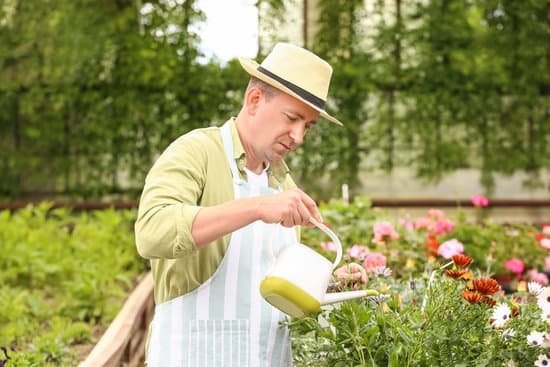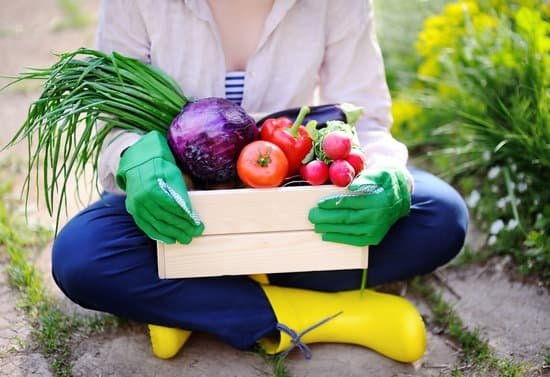Vegetable And Herb Gardening Tips
1. Location, Location, Location
The most important factor in growing vegetables is choosing the right location. Vegetables need at least six hours of direct sunlight per day. They also need well-drained soil that is rich in nutrients.
2. Planning Your Garden
When planning your garden, be sure to include a variety of vegetables. Some vegetables grow better in certain climates, while others grow better in certain soils. Be sure to plant vegetables that you and your family will enjoy eating.
3. Preparing the Soil
Before planting vegetables, you need to prepare the soil. Add compost or manure to the soil to improve its fertility. You can also add organic matter such as peat moss or straw to help the soil retain moisture.
4. Planting the Vegetables
When planting vegetables, be sure to follow the instructions on the seed packet. Most vegetables should be planted in rows, with the plants spaced about 18 inches apart. Be sure to water the vegetables regularly, especially during hot weather.
5. Harvesting the Vegetables
When harvesting vegetables, be sure to harvest them at the right time. Vegetables that are harvested too early will not be as flavorful as vegetables that are harvested at the right time. Vegetables that are harvested too late will be tough and stringy.
6. Caring for the Vegetables
In order for vegetables to grow well, they need to be cared for properly. Be sure to weed the garden regularly and water the vegetables when necessary. You may also need to apply fertilizer to the garden to ensure that the vegetables receive the nutrients they need.
Vertical Vegetable Gardening Tips
The popularity of vegetable gardening is on the rise, as more and more people are looking for ways to get closer to their food and save money on their grocery bills. While there are many ways to go about vegetable gardening, one of the most efficient and space-saving methods is vertical gardening.
Vertical gardening is exactly what it sounds like – growing vegetables in a vertical manner, as opposed to the traditional horizontal method. This can be done by using trellises, fences, or other structures to support the plants, or by growing them in containers that can be stacked on top of each other.
One of the benefits of vertical gardening is that it takes up less space. You can grow more vegetables in a smaller area, which is perfect for those with limited space or who live in an apartment. Another advantage is that it is a great way to maximize the use of vertical space.
There are a few things to keep in mind when planning a vertical vegetable garden. First, you need to choose the right vegetables. Not all vegetables will grow well in a vertical garden – those that are bushier or have tendrils that can grab onto supports work best. Lettuce, peas, beans, tomatoes, and cucumbers are all good choices for vertical gardening.
Another thing to consider is the type of soil you will use. A soil mix that is light and well-draining is best for vertical gardening, as heavier soils can be more difficult to work with and can cause the vegetables to rot.
One of the main things to remember when growing vegetables vertically is to provide adequate support. This can be done by using trellises, fences, or other structures to support the plants, or by growing them in containers that can be stacked on top of each other.
When planting vegetables vertically, it is important to space them evenly and to make sure that there is enough room for them to grow. Be sure to leave enough room between plants for air circulation, which is important for preventing disease.
Watering is another important consideration when growing vegetables vertically. It is important to water the plants regularly, especially when the weather is hot. You may need to water them more often than you would if they were grown horizontally.
Harvesting is also a bit different when growing vegetables vertically. You will need to harvest the vegetables from the top down, so be sure to plan accordingly.
Vertical gardening is a great way to maximize the use of limited space, and it is a great way to grow vegetables efficiently. By following the tips above, you can create a successful vertical vegetable garden.
Vegetable Gardening Tips Nz
There are a few things you need to know about vegetable gardening in New Zealand before you start. First, the climate is temperate, so you’ll need to choose plants that will thrive in your area. Second, the soil is often acidic, so you’ll need to adjust your pH levels accordingly. And finally, the country is prone to earthquakes, so you’ll need to take that into account when choosing a garden site.
With that in mind, here are a few tips for starting a vegetable garden in New Zealand:
1. Choose the right plants. There are a number of vegetables that thrive in New Zealand’s temperate climate, including tomatoes, cucumbers, bell peppers, eggplant, zucchini, potatoes, carrots, and beets.
2. Amend your soil. The soil in New Zealand is often acidic, so you’ll need to add lime to your soil to raise the pH levels.
3. Choose a garden site wisely. If you live in an area that is prone to earthquakes, be sure to choose a garden site that is not in a low-lying area or near any trees or power lines that could fall during an earthquake.
4. Use the right tools. When gardening in New Zealand, you’ll need to use tools that can withstand the country’s temperate climate. Be sure to use gardening tools made of metal or plastic, rather than wood, which can rot in the rain.
5. Protect your plants. New Zealand’s climate can be quite windy, so be sure to provide your plants with some protection from the wind by using windbreaks or stakes to hold them in place.
With these tips in mind, you’re ready to start vegetable gardening in New Zealand!
Vegetable Gardening Tips In Hindi
वेजेटाबल गार्डिंग टिप्स हिंदी में
कृषि के कुछ महत्वपूर्ण टिप्स हिंदी में –
1. कृषि के कुछ महत्वपूर्ण टिप्स हिंदी में –
1. कृषि के कुछ महत्वपूर्ण टिप्स हिंदी में –
1. कृषि के कुछ महत्वपूर्ण टिप्स हिंदी में –
1. कृषि के कुछ महत्वपूर्ण टिप्स हिंदी में –
1. कृषि के कुछ महत्वपूर्ण टिप्स हिंदी में –
1. कृषि के कुछ महत्वपूर्ण टिप्स हिंदी में –
1. कृषि के कुछ महत्वपूर्ण टिप्स हिंदी में –
1. कृषि के कुछ महत्वपूर्ण टिप्स हिंदी में –
1. कृषि के कुछ महत्वपूर्ण टिप्स हिंदी में –
1. कृषि के कुछ महत्वपूर्ण टिप्स हिंदी में –
1. कृषि के कुछ महत्वपूर्ण टिप्स हिंदी में –
1. कृषि के कुछ महत्वपूर्ण टिप्स हिंदी में –
1. कृषि के कुछ महत्वपूर्ण टिप्स हिंदी में –
1. कृषि के कुछ महत्वपूर्ण टिप्स हिंदी में –
1. कृषि के कुछ महत्वपूर्ण टिप्स हिंदी में –
1. कृषि के कुछ महत्वपूर्ण टिप्स हिंदी में –
1. कृषि के कुछ महत्वपूर्ण टिप्स हिंदी में –
1. कृषि के कुछ महत्वपूर्ण टिप्स हिंदी में –
1. कृषि के कुछ महत्वपूर्ण टिप्स हिंदी में –
1. कृषि के कुछ महत्वपूर्ण टिप्स हिंदी में –
1. कृषि के कुछ महत्वपूर्ण टिप्स हिंदी में –
1. कृषि के कुछ महत्वपूर्ण टिप्स हिंदी में –
1. कृषि के कुछ महत्वपूर्ण टिप्स हिंदी में –
1. कृषि के कुछ महत्वपूर्ण टिप्स हिंदी में –
1. कृषि के कुछ महत्वपूर्ण टिप्स हिंदी में –
1. कृषि के कुछ महत्वपूर्ण टिप्
Vegetable Gardening Tips And Tricks
There is a lot of information out there on vegetable gardening, and it can be difficult to know where to start. Here are a few tips to help you get started on your vegetable garden.
First, you need to decide what you want to grow. There are a lot of different vegetables that you can grow, so you need to decide which ones you want to grow. Once you have decided, you need to figure out what kind of soil you will need and what kind of climate you will need to grow those vegetables in.
Once you have that information, you can start preparing your garden. You will need to choose a location for your garden and then start preparing the soil. You can do this by adding organic matter to the soil or by using a soil amendment.
Once the soil is ready, you can start planting your vegetables. Be sure to follow the instructions on the seed packet so that you know how deep to plant the seeds and how far apart to plant them.
Once your vegetables have started to grow, you will need to water them and fertilize them. You can do this by using a water soluble fertilizer or by using compost.
Be sure to weed your garden regularly and to harvest your vegetables when they are ripe. Harvesting your vegetables regularly will help them to produce more vegetables.
If you follow these tips, you will be able to grow a successful vegetable garden.

Welcome to my gardening blog! I am passionate about plants and enjoy sharing my knowledge and experiences with others. In this blog, I will write about everything related to gardening, from tips on how to get started to updates on my own garden projects.





